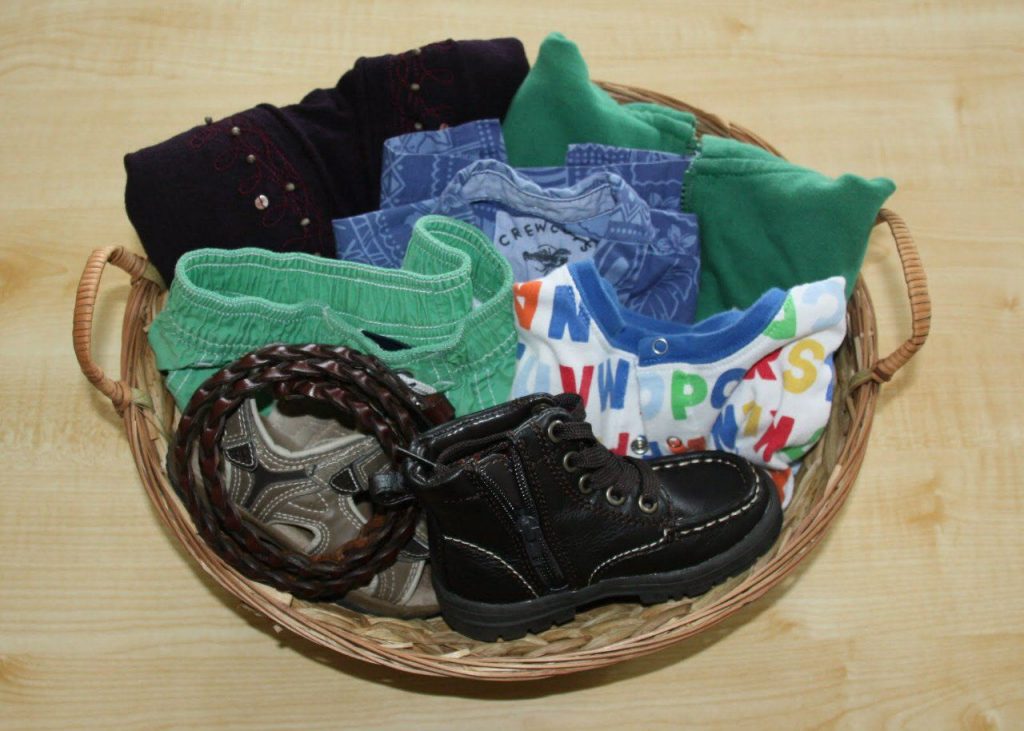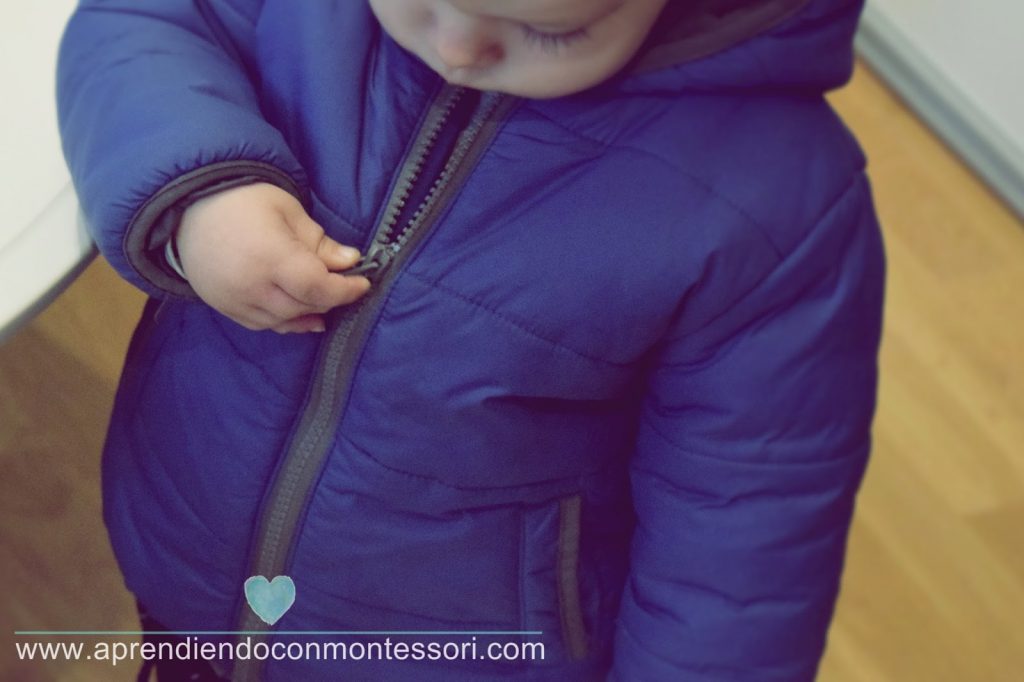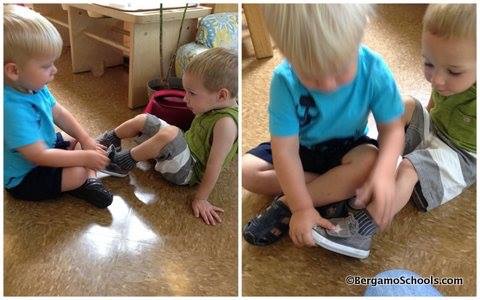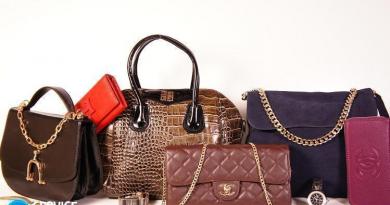When buying clothes, pay attention to the fact that the child can wear it on his own. Use pants and skirts with elastic, wide t-shirts and dresses, easy-to-wear Velcro shoes.
However, as the child grows older, you can buy things with fasteners. Do this when you see that the child has mastered this type of fastening and needs additional training.
- Closet organization.
Designate lower shelves for children's clothes that the child can easily reach, or make a crossbar on which clothes can be hung at the level of the child's height.
- Child's choice of clothes.
Children should choose what they want to wear. But for young children, it can be difficult to choose from a large number of clothes. Therefore, give your child a choice of just a few options: choose yourself 2-3 pairs of trousers, T-shirts or other clothes that are suitable for the weather, and put them on the children's shelves. You can comment on the options: “Do you want to wear a skirt or pants? Red or blue t-shirt?
- We choose clothes in advance.
If the child needs to quickly get ready in the morning (for example, to the garden), you can prepare clothes with the baby in the evening and put them in a box or basket. You can repeat the choice of the child in the morning: “Yesterday you put blue jeans, a white T-shirt in the basket ...”.

- We learn to dress.
Show me how to put on things. Sometimes something that seems so simple and obvious to parents can cause great difficulties for a child. Therefore, show slowly how to put on a particular piece of clothing, as if splitting up your actions. When the child tries to dress himself, do not rush or correct him.
If your toddler asks for help or is visibly nervous and unable to cope, be sure to help him.
- Choice of outerwear and accessories according to the weather.
In order to make it easier for the child to dress himself, it is better to put street clothes in a conspicuous place. Choose only the clothes that suit the season. Make a hook for your baby's coat so he can hang it up himself. Put the boots in a certain place so that the baby can always find them himself and put them back in the same way. Hats and scarves (suitable for the season) are also best placed in an accessible place, such as a small basket. Children are very fond of using an umbrella in the rain, as adults do. Do not deny them this opportunity, teach them to dry it on their return from the street in the same way as it is customary at home.
Go to the window in the morning and see what the weather is: maybe today is warmer than usual and you can go for a walk without a hat. Or it's raining and you need an umbrella. Teach older children to watch the weather the way you do.

- Learning to put on a jacket.
In Montessori groups, you can often see such a trick that greatly facilitates the process of dressing children and surprises people who do not know it. So, a child can put on a jacket already starting from a year and a half.
The child puts the jacket on the floor, with the hood towards him, puts his hands in the sleeves and throws it over his head. So the jacket is put on without the help of adults!
- Learning to put on shoes.
Just like clothes, choose simple shoes. Usually the first thing babies try to do after a year is to put on their own shoes. Therefore, the first shoes should be put on very simply and be without fasteners or Velcro. Place a chair near the entrance, invite the child to sit down and calmly, slowly, put on shoes. It should be noted that in Montessori groups, children who put shoes on the wrong foot are not corrected. Children quickly notice that they are uncomfortable and learn how to put on their shoes correctly.

- Help with dressing.
Children in a Montessori group usually help each other while getting dressed. Therefore, if you have several children, offer the elders to help the little ones. Surprisingly, children often understand older children's explanations better than their parents'.
- Self-care for clothes and shoes.
After the walk, invite the child to inspect clothes and shoes. Shoes should be cleaned or washed if necessary. Possible stains on outerwear - too. Let your child do it on their own. Teach your child to inspect clothes in the evening and put dirty clothes in the laundry basket, and put clean clothes back in the closet.



